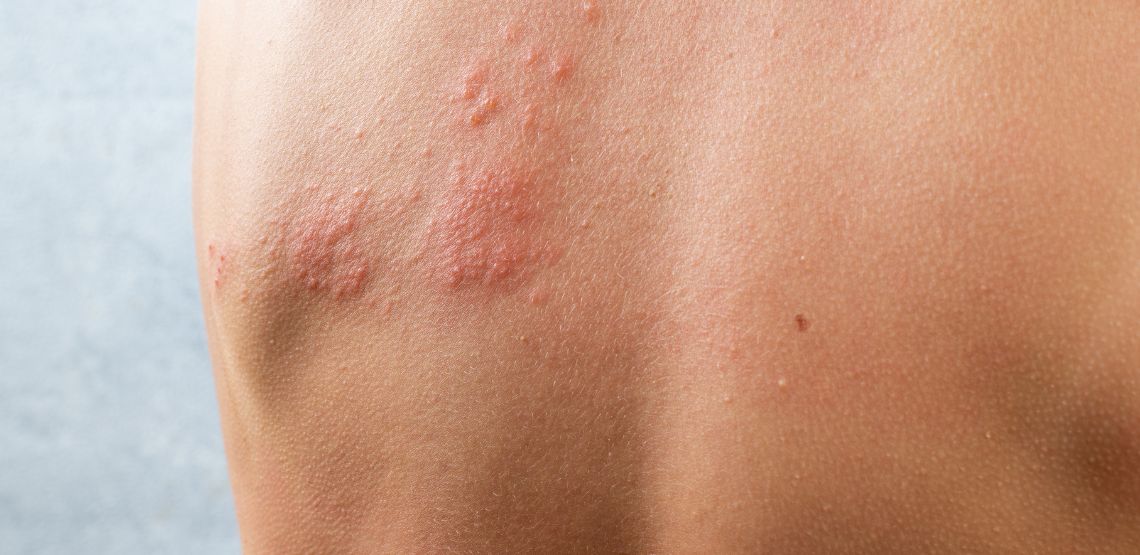Rash Decisions
Overview
Many diseases may cause skin conditions, including rashes. The red facial rash caused by Lupus and Rosacea can be differentiated by several vital factors explained here. Both disorders are currently without a cure, but symptoms may be managed through several treatment options. However, if you are experiencing a sudden severe rash of unknown origin, it’s essential to seek medical support.
Lupus Rash
Lupus is a chronic autoimmune disease that presents with several signs and symptoms, including inflammation. These symptoms can develop slowly or quickly and can range in severity. One such symptom, because of inflammatory skin, is a telltale rash on the face that affects about fifty percent of those with Lupus. The rash can occur suddenly or after exposure to the sun.
A lupus rash can present on the face as well as elsewhere on the body. The lupus facial rash takes the shape of a butterfly, known as a malar rash, extending across the nose and cheeks. This rash is a bright, mottled red color and can be worsened by exposure to sunlight. Interestingly, the rash does not affect the areas at the sides of the nose, known as the nasal folds.
Because Lupus spares the area around the nasal folds, it can be distinguished from other skin conditions that do appear around the nose, such as Rosacea. There is no single test that reveals a case of Lupus, so the disease is diagnosed through a variety of physical examinations, blood tests and analysis of the urine.
Those with Lupus may notice that the occurrence of the butterfly rash may precede a flare of the disease. Like Rosacea, the Lupus facial rash can appear elevated and may become scaly. Similar to Rosacea, the Lupus rash may be triggered by exposure to sunlight. Other triggers of the Lupus rash may include infections and certain drugs. A skin biopsy may be performed if the skin tissues are involved to determine a diagnosis.
Related Search Topics (Ads)
Treating A Lupus Rash
As Lupus can affect the body in many different ways, any treatment is geared toward where the disease is making its impact. Research into new treatments is ongoing, but several prescription drugs may be prescribed to treat the signs and symptoms of Lupus.
Immunosuppressants are drugs that settle the immune system, and some have been found effective in treating Lupus. These drugs include azathioprine, mycophenolate, methotrexate, cyclosporine, and leflunomide. Another drug treatment approach utilizes corticosteroids, including prednisone, that act to settle inflammation. However, as with all prescription drug treatments, the benefits must be weighed against any potential side effects.
Rosacea
Similarly, Rosacea may present with a red face rash across the nose and cheeks. This inflammatory skin condition may cause other signs and symptoms; many find the facial rash uncomfortable. Like the Lupus rash, Rosacea may be made worse by exposure to sunlight. Further, those with Rosacea often find that excessive stress can worsen symptoms.
The cause of Rosacea is not yet fully understood, but there appears to be a link to the heightened skin sensitivity as well as to microbes that live on the skin. Research also indicates that there might be genetic factors at play, as well as environmental causes.
Rosacea is more common in certain individuals, including fair-skinned and older adults; while it occurs more often in women, the symptoms are more severe in afflicted men. There may be a genetic link, as Rosacea may occur in families, but this link is not yet understood. Further, there are many symptoms present in Rosacea. These symptoms can be challenging to manage, and as the disease affects the face, some find it difficult in social situations.
Rosacea may begin relatively simply, with the person having blushing episodes or seeming to flush with facial redness. This redness then becomes present for more extended amounts of time and may become chronic. Those with Rosacea report that the redness is often accompanied by uncomfortable burning or tingling.
Further, the facial skin can become quite rough and present with scales. In more severe cases, the facial redness can progress; pus-filled pimples and bumps, similar to acne, can arise. Many with Rosacea also present with visible blood vessels across the cheeks and nose.
Another telltale sign of Rosacea is skin thickening, particularly on the nose, resulting in an enlarged, bulbous nose. This severe symptom is most often seen in men but can also occur in women. For some, the Rosacea rash can extend to the scalp, neck, ears and chest.
Rosacea can also affect the eyes, causing irritation and feelings of soreness, redness, itchiness, dryness and watering. Those with the disease report that their eyes feel as though grit or some other object is irritating the eyes. Eyelids may swell and become red. As the person’s vision may be negatively impacted, it is crucial to seek professional medical treatment.
Treating Rosacea
Treating Rosacea is similar to the treatment of Lupus in that various approaches may be necessary and are dependent on the individual and how the disease presents itself. Like Lupus, Rosacea treatment relies on prescription drugs. However, the treatment of Rosacea begins with prevention: avoid sunlight, alcohol, extreme temperatures and emotional stress. However, by learning what triggers an individual’s Rosacea can simplify what needs to be avoided.
Creams and ointments can help reduce symptoms, and these often contain antibiotics, antiparasitics, and ingredients that will prevent the appearance of blood vessels. Topical agents, oral medications and antibiotics are also used in the fight against Rosacea. Laser and light therapy may also improve the skin’s appearance. In the most severe cases and when other treatments fail, surgery may be considered.
Check out the foods you should be avoiding with lupus.

